The Zmiyivskyi Kurier newspaper has been published in Zmiyiv, Kharkiv Region, since 1994, first as a district newspaper and now as a regional publication. The media outlet positions itself as a patriotic, independent media outlet. One of its recent issues was published thanks to the financial support of the NUJU and foreign benefactors. However, the newspaper does not rely entirely on donor funds and is looking for opportunities to be cost-effective.
After the outbreak of full-scale war, printing had to be suspended.
“Neither the post office nor the printing house worked. On February 24, 2022, despite the fact that the war had started, we still managed to deliver part of the circulation to half of our 70 outlets. But then the terrible began, and outlets started to close. We had to suspend the newspaper for three months,” says Oleksandr Sumets, editor-in-chief of the Zmiyivskyi Kurier, “The editorial staff left for safer cities in Ukraine.”
However, as soon as the Kharkiv printing house started working, all four newspaper workers returned, and the publication has been delivering to readers again since June 1.
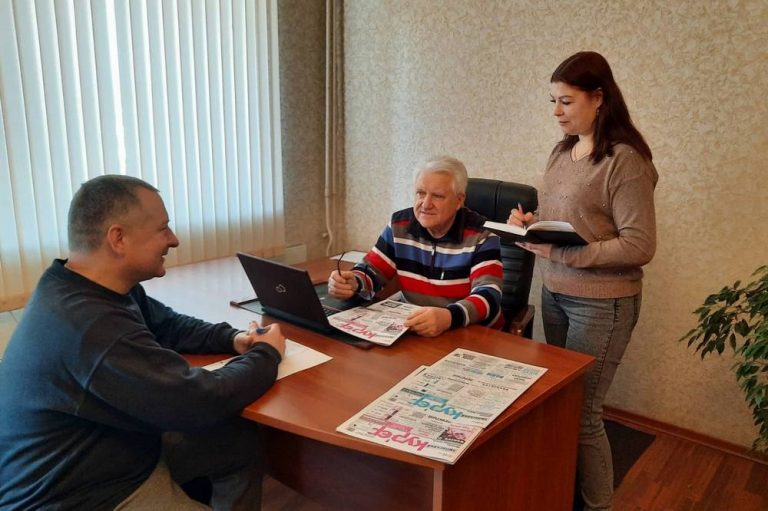
“The resumption of the publication provoked a strong reaction from the audience. Subscribers began to demand from Ukrposhta (national postal operator of state ownership – Editor) the mandatory delivery of new issues, despite the war. We got a call from a reader in Northern Saltovka (Kharkiv), which was subjected to the worst shelling by the Russians. The woman asked… why she did not receive the newspaper. However, now the newspaper is delivered to her regularly. But she still often calls the editorial office. We are glad to have such feedback,” says the editor.
The work of newspaper staff in the area close to the frontline and the border with russia always involves significant risks. Unfortunately, on June 24, 2022, one of Zmiyivskyi Kurier’s employees, the publication’s commercial director, Kostiantyn Kolpakov, was injured as he was delivering the newspaper to points of sale and passing by the Zmiyivska Thermal power station.
“On the way from Slobozhanske to Lyman village, I heard a thumping noise,” said the media person, “I thought it was something with my wheels. I stopped on the roadside, walked around the car – the wheels were intact. And immediately, I heard and saw a rocket fly over me, apparently from an ‘Uragan’. I realized it was a shelling. There was an explosion, and cluster munitions began to explode one after another in my direction. Having experience of serving in the ATO, I immediately fell to the ground, and this saved me. One munition exploded a few meters away from me. The fragment flew over the place, where I was standing, broke through the glass and got stuck in the roof of the car. Another one hit the windshield. The third one, fortunately small, hit me in the thigh.”
After the shelling ended, Kostiantyn drove to the Lyman medical and obstetric center, where he was treated: the shrapnel was removed and he was bandaged. The car was running, and the media man continued to deliver newspapers. The wound took about two weeks to heal.
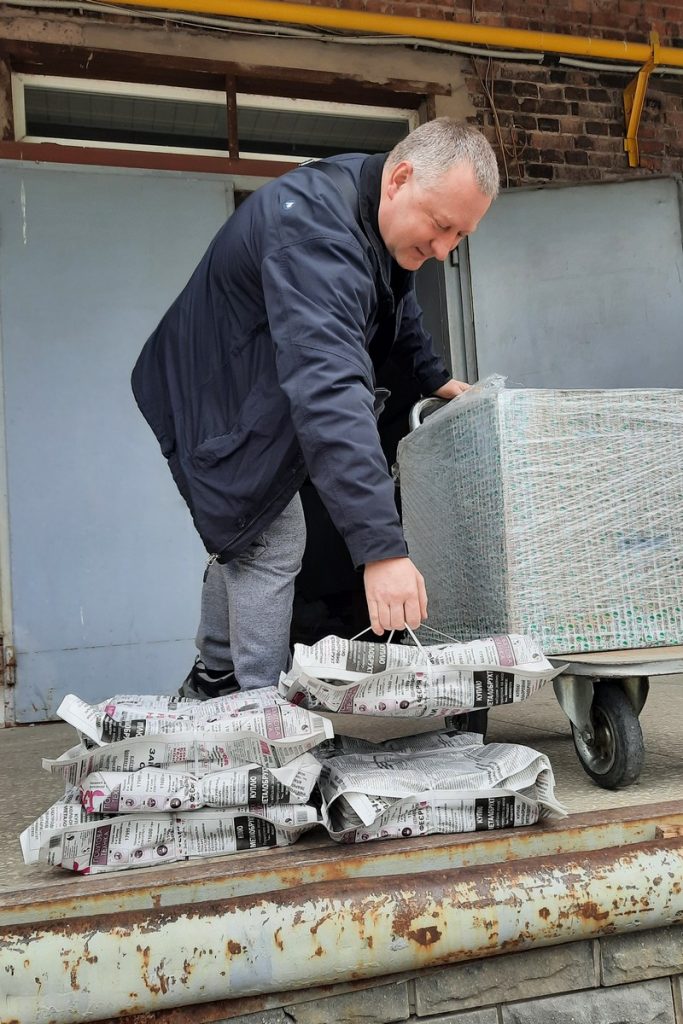
Despite economic difficulties, rising prices for paper and printing services, a decline in the advertising market, and the bankruptcy of the bank where the editorial office kept its funds, the newspaper maintains a weekly publication frequency. However, the volume had to be reduced from the pre-war 16 pages to 8.
“Each issue contains a dozen and a half articles in the ‘Day of War’ section, and one page is devoted to the recovery from de-occupation and communities’ development,” says the editor, “We also systematically tell about our volunteers and soldiers, both living and those who gave their lives in this war.
Zmiyivskyi Kurier tries to become a kind of information exchange platform between its readers and the authorities. The leadership of the communities learns from the newspaper about many pressing issues that affect ordinary residents.
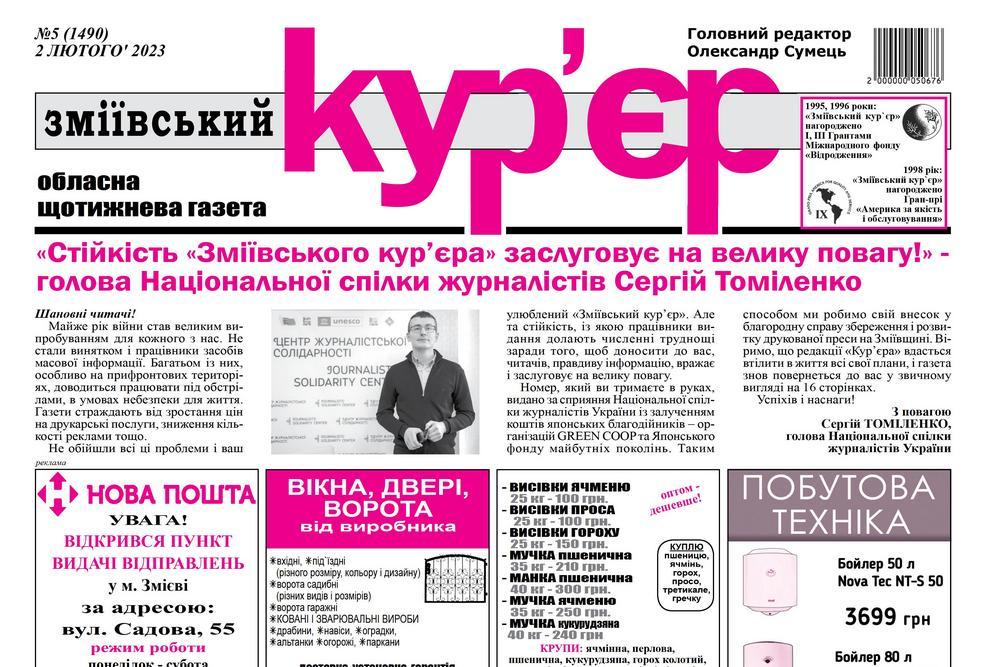
“Before the war, our publications were quite sharp. Now we continue to raise painful and problematic topics, but we try to cover them in a calmer way, because society is already quite traumatized by the war. We proceed from the principle of “do no harm”. And although in the current situation it would be easy to find fault with, say, every pothole on the road, we understand that this will not create a way out of the situation, and the life of the community, which is already tumultuous, may become even more difficult,” says Oleksandr Sumets.
According to the editor, the composition of the readership has changed a bit during the war period. While earlier Zmiyivskyi Kurier, like other paper newspapers, was read mainly by elderly people or those who do not use social media for various reasons, the age composition of the audience has changed lately. Pensioners are less likely to buy a newspaper because they are saving every hryvnia. Instead, younger people and the military have become active readers.
“When the frontline was near us, the guys, every time coming to the store to buy food, always bought a newspaper as well. It’s more convenient for a military man to read a paper edition than to search for information on the Internet, which is often unstable,” says Oleksandr.
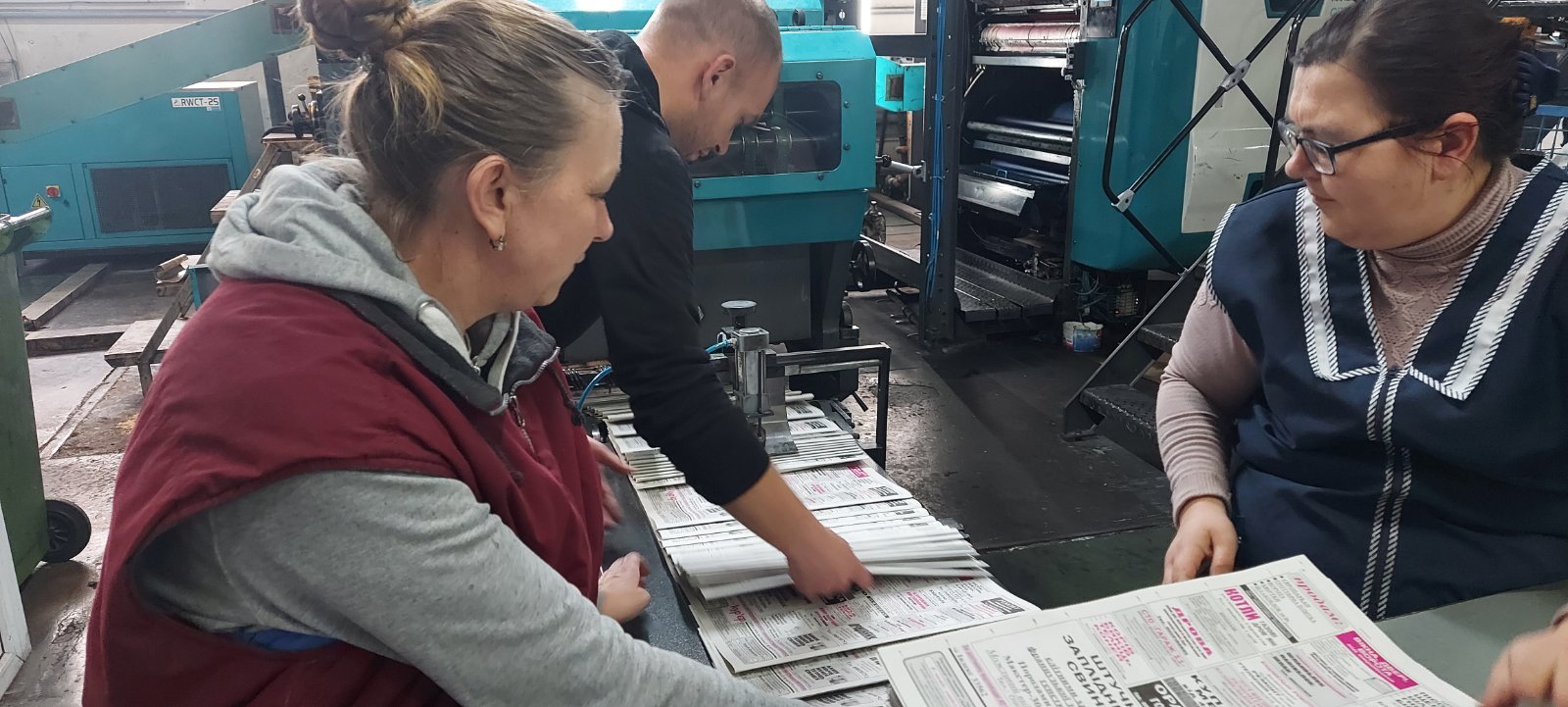
Even before the war, given the numerous problems with Ukrposhta, the Zmiyivskyi Kurier editorial board decided to focus on retail sales rather than subscriptions (which are also available). This allows them to regulate quickly the supply of newspapers to a particular outlet.
“By hook or by crook, we publish,” says the editor-in-chief, “We regulate the circulation, increasing or decreasing it depending on demand, within the range of 1,500 to 2,000. We don’t do it anymore, because the printing services are very expensive (it would be great if the state subsidized this item of expenditure in some way, but…). We are gradually trying to restore advertising volumes. Although it is incredibly difficult, the business is slowly coming back to life. Advertisers appreciate our commitment, prompt delivery, and regularity of publication. We are cautiously optimistic about the future.”
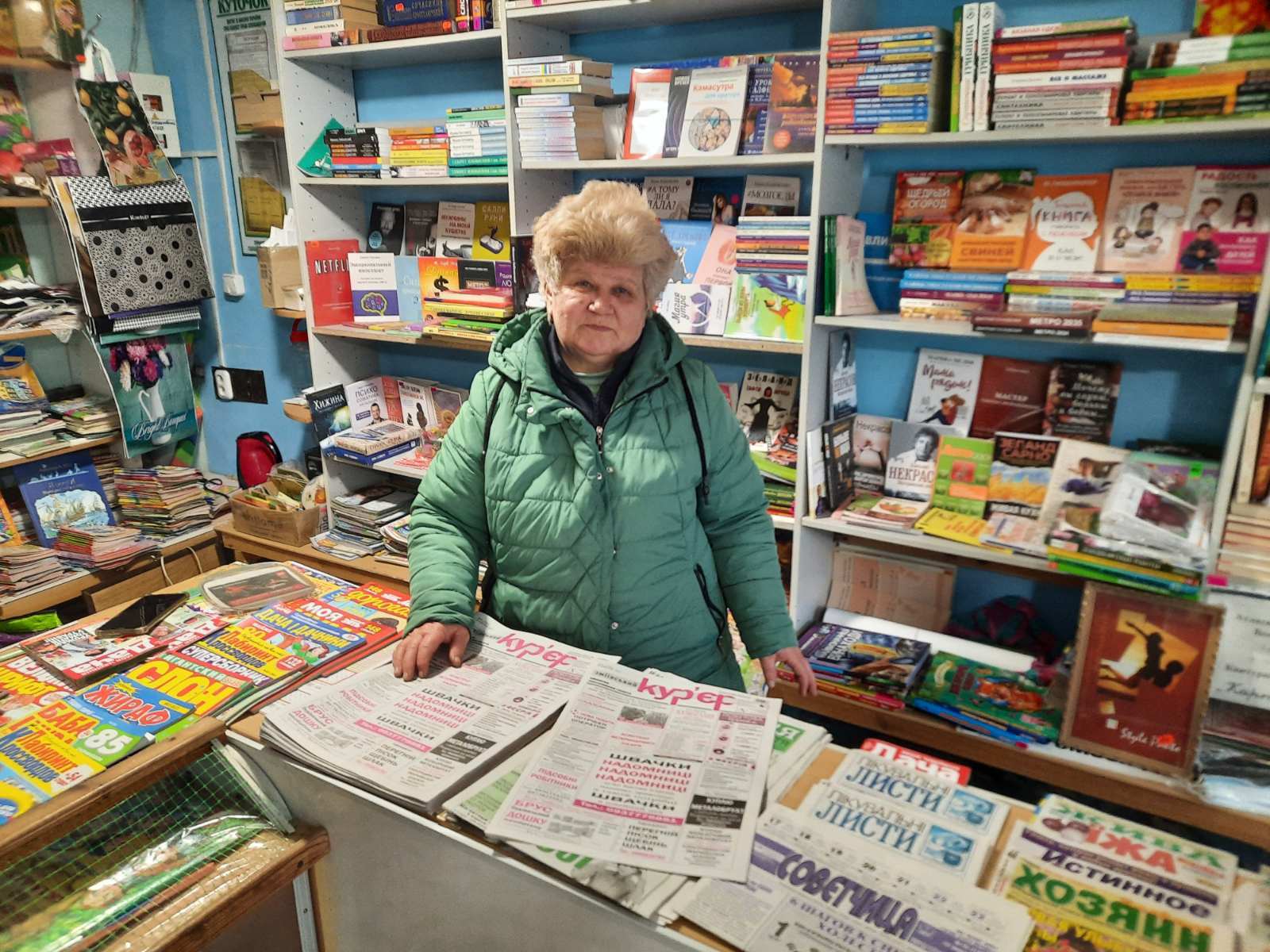
However, to a large extent, they manage to survive with the help of philanthropists, primarily the National Union of Journalists of Ukraine.
“Thanks to the NUJU, funds were raised from GREEN COOP and Japan Offspring Fund to print one of our newspaper issues. In addition, the NUJU President, Sergiy Tomilenko, presented us with a laptop received thanks to the German government. Moreover, Kostiantyn Kolpakov, who was wounded, received financial assistance from the NUJU,” says Oleksandr Sumets.
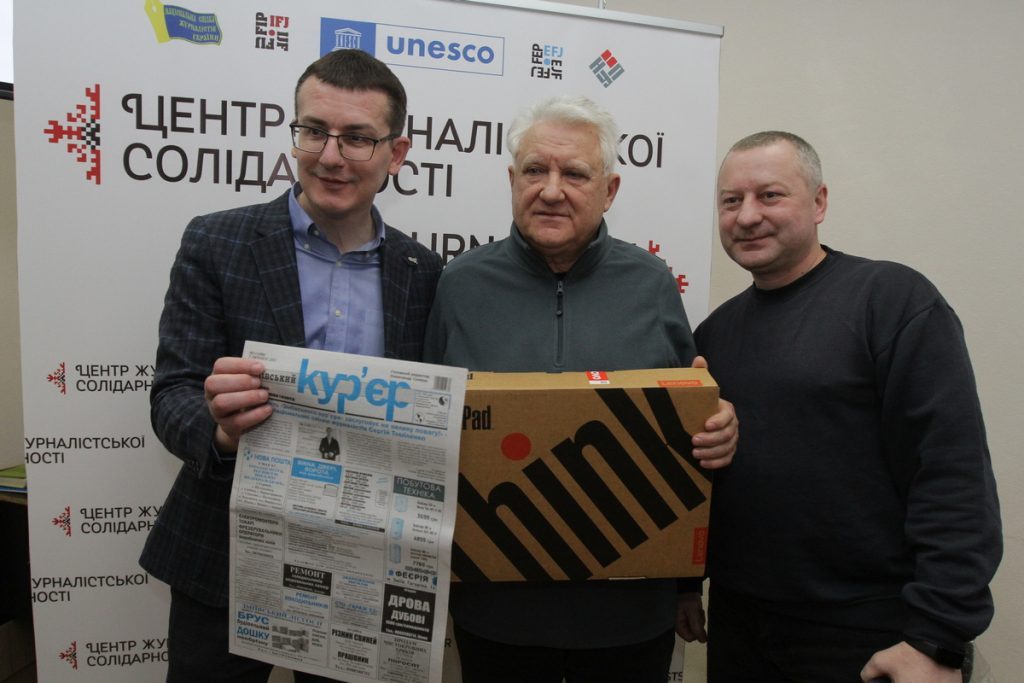
This story about the media was created by the NUJU in the frame of the project «Improving Ukrainian Media Resilience in Ukraine», financed by Swiss Solidarity and implemented with the support of the Swiss non-profit organization Fondation Hirondelle and the Institute for Regional Media and Information (IRMI, Ukraine). Fondation Hirondelle and IRMI implement a project of institutional support for Ukrainian media editorial offices in the east, north, and south of our country, with an emphasis on the local press. They also launched a 10-month support program for 18 media.
Economic reference
Zmiyivskyi kurier print weekly
Distribution area: Kharkiv Region
Editor-in-chief: Sumets Oleksandr Mykolayovych
- On June 1, 2022, after three months of suspension of operations, the newspaper resumed publishing and is now published once a week, reducing the number of pages from 16 to 8.
- The average circulation of one issue in March 2023 is 1,500 copies. 30% of the circulation goes to subscribers while 70% is sold at retail.
- Since the beginning of the war, the editorial staff has not changed its quantity: 4 people still work on the newspaper.
- Due to shelling while delivering newspapers, an editorial staff member was injured, so the media needs protective equipment to work in combat and emergency situations.
- The media outlet did not lose its editorial office and is currently using it in the production process.
- The editorial staff maintained the ratio of revenues to the editorial budget from subscriptions and retail sales compared to the pre-war period, but the share of advertising revenues decreased significantly.
- The shortfall in funds is compensated by grant assistance. Lately, the editorial office has received assistance from the Japanese organization GREEN COOP and Japan Offspring Fund.
- In addition to the printed version, the publication has pages on Facebook, Instagram, Telegram, and Viber.
- 29 years in the press market.
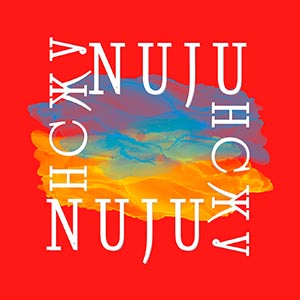
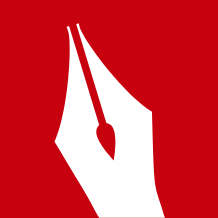 THE NATIONAL UNION OF
JOURNALISTS OF UKRAINE
THE NATIONAL UNION OF
JOURNALISTS OF UKRAINE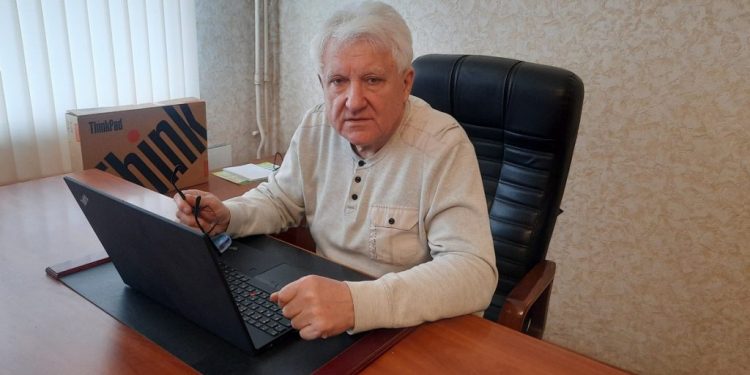

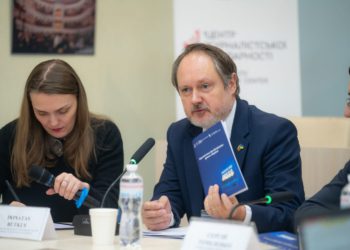
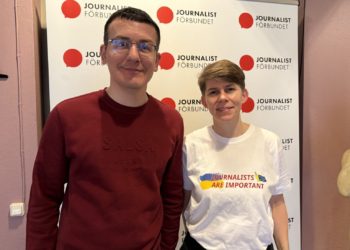
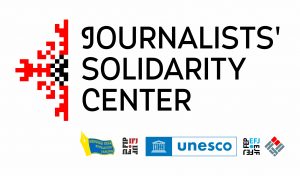
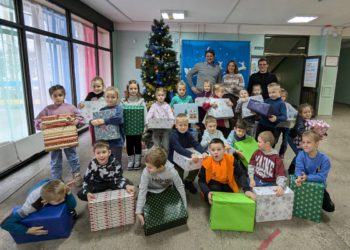







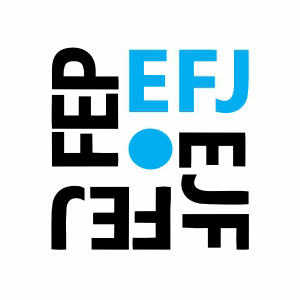



Discussion about this post